Equipment
On the page devoted to equipment, I've stressed the importance of equipment: it's very difficult to make a good start in the kitchen if you don't have the vital minimum of utensils.
I've already drawn up an initial list of the 10 essentials (those without which I can't do anything), but let's try to narrow it down even further to make it the survival kit for the beginner in the kitchen, which you may be if you're reading these lines.
What do you need, in order of importance?
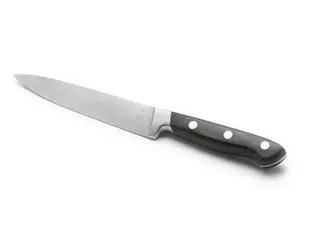
1) A knife: Medium-sized, stainless steel, plastic handle, with one of those little sharpening systems where you slide the knife between two metal pieces (if you're comfortable with that, you can take a sharpening gun instead, but its use is not obvious).
The right knife is really THE first thing to buy, without it nothing is possible.
Don't hesitate to pay the price, and buy a top brand if you have to, as it's an investment for the future.
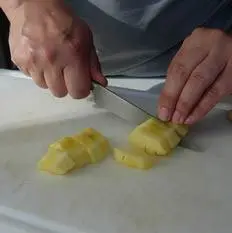
2) A cutting board: Take one made of synthetic material, thick enough and large enough for ease of use. It will enable you to cut, chop, chisel, etc. without damaging your table or worktop, and without disabling your famous knife too quickly.
Even if it's tempting to choose a wooden board that looks natural and practical, it's best to avoid it because wood retains the odors of what you're cutting too well, it's harder to wash thoroughly, and you'll inevitably end up putting sawdust in what you're cutting.
Also, avoid metal or glass plates, which are pointless gadgets.
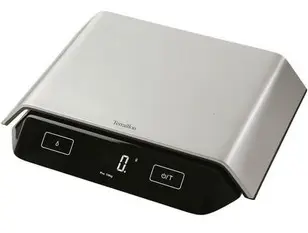
3) A scale: There's so much weighing and measuring involved in cooking, and even more so in pastry-making, that it's vital to have one. I highly recommend electronic scales, which are very practical (automatic tare) and now very affordable.
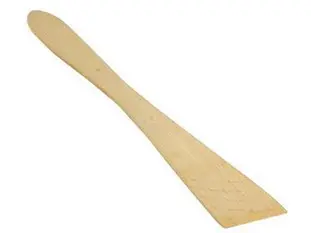
4) A spatula: A kind of flat wooden spoon, it's a bit of a jack-of-all-trades for turning in a saucepan, pushing things around on the board, flipping things over, etc. The spatula, on the other hand, is an essential tool in the kitchen.
On the other hand, it's important that the spatula is made of wood, because wood doesn't conduct heat like metal does, so you can stir or leave it in a very hot pan without burning yourself, which wouldn't be possible with a soup spoon, for example.
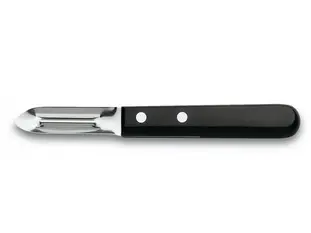
5) A peeler: this is simply a peeling knife. You could, of course, peel potatoes with a normal knife, but you'd need a chef's skill not to peel them as thick as your thumb! So a peeler is a very good choice for beginners.
The kitchen background
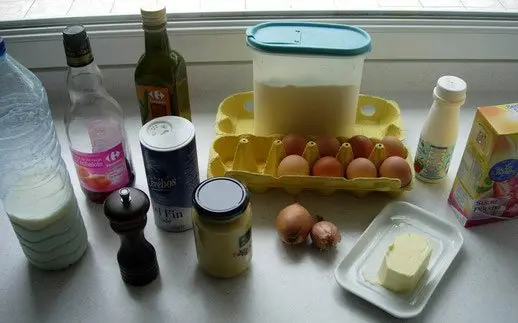
Of course, to make a recipe you need to have all the ingredients you need, but if you look at the ingredients page (sort the table by the number of times they're used) you'll see that some of them come up often, even very often.
That's why it's a good idea to build up a small batch of products, which you should try to always have, either in your cupboards or in your fridge, and which is generally referred to as your "kitchen stock".
Here are some tips on how to build your own, with 10 simple but almost indispensable products.
Essential products
- Salt and pepper: Without them, it's almost impossible to cook. Some will tell you that's how you recognize a great chef; with just salt and pepper, they're able to reveal the flavors of a dish. So always carry a tin of fine salt and ground pepper.
- If possible, top it off with coarse salt, and a pepper mill that you fill yourself with peppercorns, which are much better tasting and more effective.
- Oil and vinegar: A bottle of each, to be kept out of the fridge and chosen according to your taste, for example olive oil and red wine vinegar.
- Mustard: A simple mustard, Dijon type, in a jar to be kept in the fridge.
- Sugar: Powdered sugar, preferably stored in a jar that closes.
- Butter: Real butter, not low-fat, farm-fresh or organic if possible, store in the fridge.
- Eggs: Eggs, preferably free-range or organic. Contrary to popular belief, it's not essential to keep them in the fridge.
- Flour: Standard flour, stored in a sealable container.
- Onion and/or shallot: Store in the refrigerator crisper or at room temperature.
- Milk: Milk, if possible organic and skimmed or not according to your taste, to be stored in the fridge.
- Cream: Cream, organic if possible, liquid or not, according to your taste and habits, to be stored in the fridge.
Of course, all this can be modified according to your tastes and habits, but let's just say that you've got a good starting point here.
You'll notice that I often insist on the quality of the products, which is important for the dishes you're going to make, of course, but also for you.
As a general rule, whenever possible, try to find good products that are fresh, healthy, local if possible and, unfortunately, often more expensive than others, but that's the price we pay for our health.
Where to begin
Once you have some good basic equipment and ingredients, you need to get started and choose a recipe.No problem there - plenty to choose from on this site! If you're not sure, look at the list of all the recipes. They're all written and photographed, or filmed, to help beginners.
I suggest you also look at the "Recipes - a few tips" page. Here you'll find all you need to know before tackling a recipe, whether from this site or elsewhere.
A little kitchen philosophy
To finish with, here are 10 little home cooking tips or maxims. Some might seem obvious to you, but you'll see what you need to remember...1) Cooking at home is fun, it should be enjoyable for everyone involved: you, your family and friends.
2) Cooking is a pleasure to do, but above all to share; nothing beats seeing how your friends or family appreciate what you have done (especially when you've worked hard). The French chef Joël Robuchon says in one of his books, "To double the pleasure of cooking, it needs to be shared".
3) Don't be too ambitious at first. Start with a fairly simple recipe, to learn the basics, then progress. Put simply, this means: avoid recipes with the symbol. It might be tempting to try macaroons, but that would be to make things difficult for yourself.
4) Allow yourself the best conditions: don't invite guests the first time you try a recipe, as you will put yourself under unnecessary pressure.
5) Relax! Cooking is flexible. When the recipe says "leave to stand for 15 minutes", if you leave it a few minutes less or a bit longer, nothing's going to explode. Similarly, if you don't have a particular ingredient, don't panic. You can often substitute something else. But be reasonable, all the same: if you don't have any flour, there's no point trying to make a four quarters cake!
At which point you must be thinking, "Is he joking? Flour's one of the basics, so I always have some in the cupboard."
6) Enlist helpers! You've invited friends, so put them to work. Cooking together is fun, you just need to allocate tasks at the beginning, you stay in charge (the "chef", which just means boss!), and you can all laugh and chat while cooking - always a great time.
On the subject of roles, there's one which should not be overlooked: that of glass filler (who might also be responsible for opening bottles). It's a noble task, which has a huge influence on the mood and morale of the workers. The best in the world at this is my friend Robert.
7) Stay calm: everything's gone wrong, it's burnt, too salty, inedible, you've completely ruined it, and yet you're sure you followed the recipe to the letter, damn it! Oh yes - it happens, even to chefs! You might cry tears of rage, but that won't get you anywhere.
For times like this you need a survival strategy: get out of the kitchen right away, and order pizzas for everyone, or go out and eat - even something simple - if you can. It's the best way to get over your disappointment. Later, with a cool head, you'll have time to analyse what went wrong, have another go, and this time (or the next...) get it right.
8) Be scrupulously clean: we've a tendancy to forget this at home sometimes, but cleanliness in the kitchen is vital. Without going overboard and becoming obsessive, do remember to:
- wash your hands before you start
- change the tea-towels when you need to
- wash vegetables thoroughly
- clean the worktop with soap, especially if you've been peeling muddy vegetables on it.
9) Let the children get involved: if you have children or grandchildren, make them feel welcome in the kitchen (except of course when you are handling something dangerous like hot oil, boiling caramel, or anything very tricky).
Encourage them to get their fingers into and handle everything (not sharp things, of course!), let them stir with a spoon, mix with their hands, dip a finger in the chocolate, make crumble, and above all taste, even if it's not cooked yet! It's now or never that they'll be ready to try new things, new tastes, new combinations. In short, help to open their eyes and their minds.
10) Cooking is not some sacred act, nor an exact science: so you can try anything that comes into your head. You might have a flop, and it often happens, but never mind, you'll do better next time!
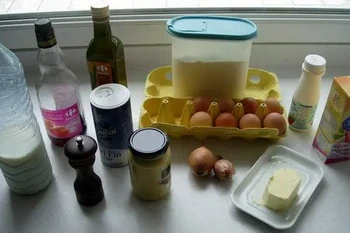





The 1 comment already posted on this page